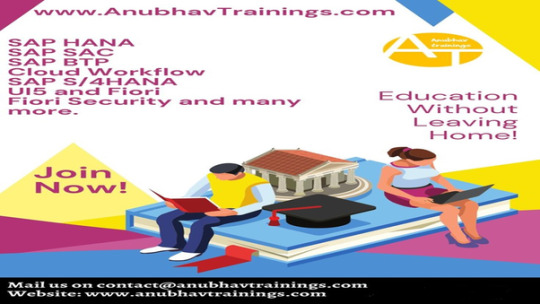#common ui5 error
Explore tagged Tumblr posts
Text
Preparing for an SAP evaluation—whether it's for a job interview, internal assessment, or client-facing project—requires a mix of technical knowledge, business process understanding, and soft skills. Here's a list of key facts and areas you should be comfortable with:
🔧 1. Know Your SAP Module(s)
Understand the core functionality of the module(s) you're being evaluated on (e.g., SD, MM, FI, ABAP, etc.).
Be able to explain end-to-end processes (e.g., Order-to-Cash for SD, Procure-to-Pay for MM).
Know standard T-Codes, tables, and customization paths.
🧠 2. Master the Basics of SAP S/4HANA
What is S/4HANA? How is it different from ECC?
Benefits of S/4HANA (e.g., HANA database, real-time analytics, simplified data model).
Fiori and its role in user experience.
🛠️ 3. Configuration and Customization
Understand IMG paths for configuration.
Be able to explain a configuration scenario (e.g., pricing procedure in SD or document types in MM).
Know how configuration impacts business processes.
📊 4. Integration Knowledge
Understand how your module interacts with others (e.g., SD with FI and MM).
Common integration points (e.g., billing triggers accounting, delivery impacts inventory).
💻 5. Technical Understanding (for functional consultants too)
Ability to read or explain a basic ABAP report or enhancement.
Understanding of user exits, BADIs, or enhancement frameworks.
Familiarity with IDocs, BAPIs, and interfaces.
🔍 6. Real-World Scenarios & Troubleshooting
Be ready to discuss: A challenge you faced and how you resolved it. How you handled a business requirement that wasn’t standard. Performance issues or error debugging examples.
📋 7. Documentation & Testing
Know how to prepare Functional Specs, Test Cases, UAT scenarios.
Explain the project lifecycle: blueprinting → realization → testing → go-live → support.
📚 8. Common Project Methodologies
Be familiar with ASAP, Activate, or Agile methodologies.
Phases of SAP implementation.
🤝 9. Communication & Stakeholder Management
Can you explain complex concepts in simple terms?
Have examples of working with business users or developers.
Client-facing consultants should show business acumen and consulting etiquette.
📝 10. Miscellaneous but Important
Current trends: Rise of S/4HANA Cloud, Embedded Analytics, BTP (Business Technology Platform).
SAP Certifications you have or plan to pursue.
Experience with tools like SAP Solution Manager, SAP Fiori Launchpad, etc.
If you let me know which module or role you're being evaluated for (e.g., SD functional consultant, ABAP developer, etc.)
Call us on +91-84484 54549
Mail us on [email protected]
Website: Anubhav Online Trainings | UI5, Fiori, S/4HANA Trainings

0 notes
Text
.
#so this week has been a week#but i also had some good moments i guess#like i started ui5 and im already so much more comfortable with it than w backend development#even though javascript error analysis is making me want to scream but thats sth else#and i finally got to see my crush again after like 3 weeks#i was scared to text him cause i know how busy he is w exams and didnt want to bother him#but i eventually drunk texted him and he asked to meet up the next day#so that was nice#and his last exam is tomorrow so im definitely going to see him a lot more now#we talked a lot about what he's doing at uni and what im doing at my job#and it feels kinda nice to have sth that will probably shape our whole life in common#and hmmmmm........ i loved seeing his face god i missed him.. sm#alishe.txt#b
0 notes
Text
A new SAP BASIS consultant faces several challenges when starting in the role. Here are the most common ones:
1. Complex Learning Curve
SAP BASIS covers a broad range of topics, including system administration, database management, performance tuning, and security.
Understanding how different SAP components (ERP, S/4HANA, BW, Solution Manager) interact can be overwhelming.
2. System Installations & Migrations
Setting up and configuring an SAP landscape requires deep knowledge of operating systems (Windows, Linux) and databases (HANA, Oracle, SQL Server).
Migration projects, such as moving from on-premise to SAP BTP or HANA, involve risks like downtime and data loss.
3. Performance Tuning & Troubleshooting
Identifying bottlenecks in SAP system performance can be challenging due to the complexity of memory management, work processes, and database indexing.
Log analysis and troubleshooting unexpected errors demand experience and knowledge of SAP Notes.
4. Security & User Management
Setting up user roles and authorizations correctly in SAP is critical to avoid security breaches.
Managing Single Sign-On (SSO) and integration with external authentication tools can be tricky.
5. Handling System Upgrades & Patching
Applying support packs, kernel upgrades, and enhancement packages requires careful planning to avoid system downtime or conflicts.
Ensuring compatibility with custom developments (Z programs) and third-party integrations is essential.
6. High Availability & Disaster Recovery
Understanding failover mechanisms, system clustering, and backup/restore procedures is crucial for minimizing downtime.
Ensuring business continuity in case of server crashes or database failures requires strong disaster recovery planning.
7. Communication & Coordination
Working with functional consultants, developers, and business users to resolve issues can be challenging if there’s a lack of clear communication.
Managing stakeholder expectations during system outages or performance issues is critical.
8. Monitoring & Proactive Maintenance
New BASIS consultants may struggle with configuring SAP Solution Manager for system monitoring and proactive alerts.
Setting up background jobs, spool management, and RFC connections efficiently takes practice.
9. Managing Transport Requests
Transporting changes across SAP environments (DEV → QA → PROD) without errors requires an understanding of transport logs and dependencies.
Incorrect transport sequences can cause system inconsistencies.
10. Staying Updated with SAP Evolution
SAP is rapidly evolving, especially with the shift to SAP S/4HANA and cloud solutions.
Continuous learning is required to stay up-to-date with new technologies like SAP BTP, Cloud ALM, and AI-driven automation.
Mail us on [email protected]
Website: Anubhav Online Trainings | UI5, Fiori, S/4HANA Trainings

0 notes